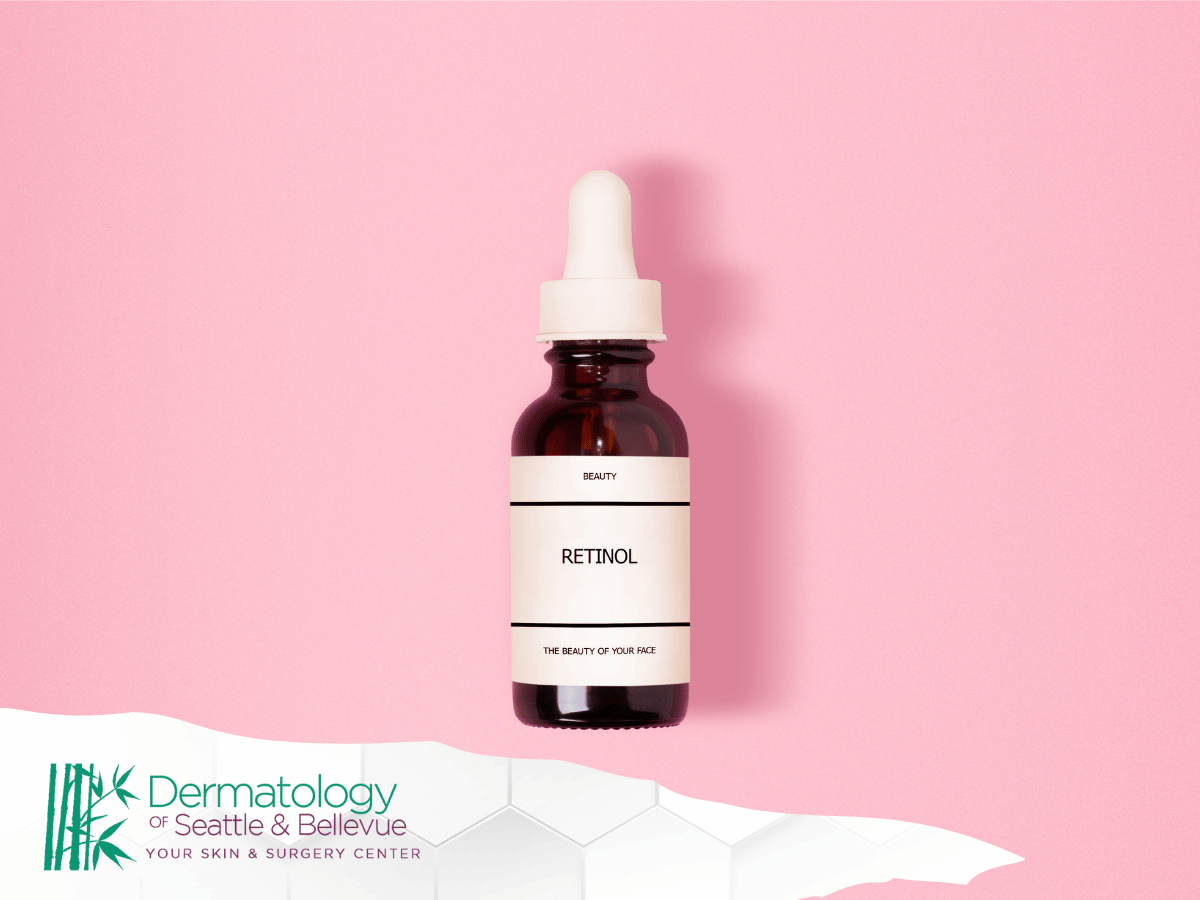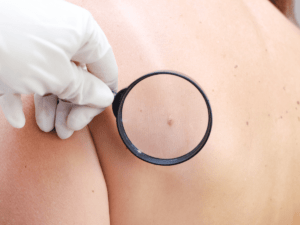If you’ve browsed the skincare aisle or visited a dermatologist, chances are you’ve come across the ongoing debate: retinol vs. prescription retinoids. Both are powerful tools for treating acne, reducing wrinkles, and promoting smoother, healthier skin—but they’re not the same. Understanding when to use each can mean the difference between glowing results and frustrating irritation.
This practical guide: when to use at-home retinol vs. prescription retinoids will help you navigate the difference, weigh your skin type and goals, and choose the right product for your needs.
At-Home Retinol
Over-the-counter retinol is one of the most accessible and widely used ingredients in skincare. Often found in creams, serums, or retinol products, it delivers visible improvements with fewer side effects compared to stronger prescription retinoids.
If you’re a beginner, or if your concerns are relatively mild, retinol can be a great place to start.
Understanding At-Home Retinol
Retinol is a form of vitamin A that promotes cell regeneration and boosts skin cell turnover, helping to unclog pores, reduce acne, and improve fine lines and dark spots over time.
Here’s what you should know:
- It’s milder than prescription retinoids, making it better suited for sensitive or dry skin
- Results are gradual—most users start noticing visible changes after a few months
- Best used as part of a retinol routine that includes a moisturizer and daily sun protection
- Apply retinol at night to minimize sun sensitivity and maximize effectiveness
- Pure retinol, retinaldehyde, and retinyl esters are common forms found in drugstore or high-end skincare products
When used consistently and carefully, retinol can significantly improve your overall complexion without the downtime or intensity of prescription treatments.
Benefits of Using At-Home Retinol
At-home retinol offers a range of benefits for people seeking gradual, manageable results without a prescription. It’s often recommended for those looking to improve skin texture, tone, and early signs of aging.
Key benefits include:
- Smoother skin and refined pores
- Improved appearance of fine lines and wrinkles
- Faded dark spots and post-acne marks
- Gentle exfoliation of dead skin cells
- Less risk of intense irritation compared to high-strength retinoids
It’s a great introduction to the retinoid family, especially if you’re building a routine slowly or want a low-risk way to see how your skin reacts.
Types of At-Home Retinol Products
There’s no one-size-fits-all when it comes to retinol. At-home options vary in strength, formulation, and delivery system, so it’s important to choose a product that suits your skin type and goals.
Common at-home retinol forms include:
- Pure retinol – most potent OTC form, effective but may cause mild dryness
- Retinaldehyde – slightly stronger and more direct in converting to retinoic acid
- Retinyl palmitate – gentler, better for sensitive skin or new users
- Combination products – often blended with moisturizers, peptides, or vitamins to reduce side effects
Knowing which formulation fits your routine helps you balance effectiveness with comfort.
How to Incorporate At-Home Retinol into Your Skincare Routine
Using retinol properly is key to minimizing side effects and maximizing results. A thoughtful retinol routine should be tailored to your skin’s tolerance and paired with barrier-supporting products like moisturizer and sunscreen.
Start slow:
- Apply 2–3 times per week at first, then increase as tolerated
- Use a gentle cleanser, followed by retinol, then a hydrating cream
- Always apply retinol at night—never in the morning
- Follow with broad-spectrum sunscreen the next day
Avoid pairing retinol with exfoliating acids (like salicylic acid or benzoyl peroxide) until your skin has adjusted.
Prescription Retinoids
When over-the-counter options don’t deliver the desired results, prescription retinoids step in with stronger formulations that penetrate deeper into the skin. These potent medications are typically used for stubborn acne, visible aging, or hyperpigmentation that hasn’t responded to milder treatments.
They’re not for everyone—but in the right hands, they can deliver transformative changes.
Understanding Prescription Retinoids
Prescription retinoids are high-strength derivatives of vitamin A, such as tretinoin, adapalene, or retinoic acid, that work faster and more aggressively than OTC retinol.
Here’s what sets them apart:
- Require a prescription from a dermatologist
- Often used in medical dermatology for severe acne or advanced aging
- Can cause noticeable irritation, dryness, or flaking during the adjustment phase
- More effective in stimulating collagen, smoothing fine lines, and reducing deep-set blemishes
- Must be used with strict sun protection due to increased sun sensitivity
These products are ideal for those who’ve already tried drugstore solutions with little improvement.
Benefits of Using Prescription Retinoids
The power of prescription retinoids lies in their ability to address more serious skin issues at a cellular level. They offer results faster and more dramatically than OTC retinol options.
Benefits include:
- Faster resolution of acne breakouts
- Smoother skin texture and reduced pores
- Visible improvement in wrinkles and hyperpigmentation
- Stronger stimulation of skin cell turnover and collagen production
- Suitable for treating severe acne, scarring, and resistant pigmentation
However, their strength means they require guidance, patience, and consistent skincare habits.
Types of Prescription Retinoids
Not all prescription retinoids are created equal. The most common types vary in strength and intended use, and some are better suited for acne, while others focus more on aging or discoloration.
Popular types include:
- Tretinoin – the most widely used, effective for both acne treatment and anti-aging
- Adapalene – a synthetic retinoid (also found in OTC Differin) with fewer side effects
- Tazarotene – the strongest of the group, often reserved for more advanced cases of acne or photoaging
- Retinoic acid – the active form that directly impacts the dermis for fast cell regeneration
Each option has its place, and your dermatologist will recommend one based on your skin type, condition, and treatment goals.
How to Obtain Prescription Retinoids
To access prescription retinoids, you’ll need to schedule an appointment with a licensed dermatologist or provider. They’ll evaluate your skin, discuss past product use, and determine whether a higher-strength retinoid is the right fit.
Once prescribed, these products are available through pharmacies or specialty skincare clinics. Some brands also offer digital dermatology consults for faster access to prescription-level skincare.
Factors to Consider
Before choosing between at-home retinol and prescription retinoids, it’s important to assess a few key factors. Your skin type, goals, lifestyle, and even budget all play a role in determining what level of strength and care your skin can handle.
The following sections break down these considerations to help you make the best decision for your routine.
Skin Concerns
What you’re trying to treat plays a big role in whether you should reach for retinol or ask your dermatologist about prescription retinoids. The severity and persistence of your skin concerns determine the strength you’ll need.
Here’s a quick guide:
- Use at-home retinol for mild acne, dull skin, and early aging
- Choose prescription retinoids for deep wrinkles, severe acne, or stubborn hyperpigmentation
- If you have dark spots that don’t respond to OTC products, a stronger active ingredient may be needed
- For blackheads, whiteheads, or persistent breakouts, a retinoid like tretinoin or adapalene may be more effective
Tailoring your treatment to your skin concerns helps avoid wasting time and money.
Skin Sensitivity
If you have sensitive skin, eczema, or conditions like rosacea, starting with a low-strength retinol is usually the safest bet. Stronger retinoids may lead to redness, dryness, or irritation without proper acclimation.
Start with:
- A gentle OTC retinol cream
- Buffering with moisturizer
- Using it only 2–3 times per week until tolerance builds
Eventually, if your skin adapts well, your dermatologist might recommend moving up to a strength retinoid.
Budget
Your budget can also guide your decision. While retinol products are widely available in drugstore and luxury versions, prescription retinoids may be more expensive—especially if not covered by insurance.
If cost is a concern:
- Try a counter retinol first
- Look for brands with high-quality formulations and stable packaging
- Ask your dermatologist about generic prescription options if needed
Managing expectations alongside your budget ensures your skincare journey stays sustainable.
Convenience
Another factor to weigh is how easy it is to access and maintain your retinoid or retinol use. For some, a quick trip to the store or a click online makes at-home retinol the obvious choice. Others may prefer the precision and customization of a prescription plan.
If you’re looking for:
- Immediate accessibility: retinol is available everywhere, from drugstores to online retailers
- Personalized care: prescription retinoids offer more targeted results under medical guidance
- Less commitment: OTC retinol gives you flexibility without the need for an appointment
Whichever path you choose, consistency is what truly drives results.
When to Use At-Home Retinol
Not everyone needs the intensity of a prescription. Retinol is great for users who want gradual change or who are just beginning their skincare journey. It offers enough potency to improve aging, acne, and tone without overwhelming the skin.
The next few sections outline ideal scenarios for choosing at-home retinol.
Mild Skin Concerns
If you’re dealing with occasional breakouts, early fine lines, or uneven skin tone, at-home retinol is a smart, manageable starting point. It helps improve pores, reduce dullness, and support cell turnover with a lower risk of side effects.
Milder concerns often respond well to retinol, especially when paired with the right skincare routine and moisturizer.
Sensitive Skin
Those with sensitive skin should approach retinoids with caution. Retinol offers a gentler alternative to prescription formulas, making it an ideal entry point for anyone worried about irritation, flaking, or dryness.
Best practices for sensitive users:
- Start with a low concentration of retinol (0.25% or less)
- Use only 2–3 times per week initially
- Apply a moisturizer before or after to buffer the effects
- Avoid combining with exfoliants like salicylic acid or benzoyl peroxide
- Watch for redness or tightness, and pause if discomfort persists
Building tolerance slowly is key to maintaining your skin health while reaping the benefits.
Budget-Friendly Option
If you’re looking to improve your skin without the cost of a prescription, at-home retinol is a solid option. Many high-performing retinol creams and serums are available at a fraction of the cost of prescription retinoids.
Whether you’re targeting mild acne, wrinkles, or dull skin, affordable products can still deliver noticeable results—especially when used consistently.
When to Use Prescription Retinoids
While retinol works for many, there are times when stronger intervention is needed. Prescription retinoids are best for more persistent or deep-rooted skin issues that haven’t improved with OTC options.
Let’s break down when it’s time to level up your routine.
Severe Skin Concerns
If you’re dealing with severe acne, deep wrinkles, or long-standing hyperpigmentation, prescription retinoids may be the most effective solution. These conditions often require deeper penetration and faster cell regeneration than OTC retinol can offer.
Conditions that benefit from stronger treatment include:
- Nodular or cystic acne
- Sun-damaged skin
- Persistent dark spots or melasma
- Thickened, uneven skin texture
In these cases, prescription retinoids like tretinoin or adapalene offer more aggressive and targeted results.
Resistant Skin Concerns
If you’ve been using retinol consistently for several months with minimal improvement, it may be time to consult a dermatologist about switching to a strength retinoid. Some skin types are simply more resilient and require a higher-concentration active ingredient to trigger meaningful change.
When your retinol plateau hits, upgrading to a prescription formula could be the key to better results.
Dermatologist Recommendation
Ultimately, your dermatologist is the best person to assess your skin and recommend the right treatment. If you’re unsure whether to try retinol or request a prescription, don’t guess—ask.
A quick consult can clarify:
- Which product strength your skin type can handle
- How to avoid or manage side effects like irritation or peeling
- How to layer your skincare correctly for the best outcome
- Whether retinoids are safe to use with your current medications or conditions
When in doubt, go straight to the derm.
Conclusion
Deciding between retinol and prescription retinoids doesn’t have to be confusing. This practical guide: when to use at-home retinol vs. prescription retinoids shows that your best choice depends on your skin, your goals, and how much guidance you need.
Final Thoughts and Recommendations
If you’re just starting out or have sensitive skin, go slow with at-home retinol. For stubborn acne or signs of aging, a stronger prescription may be your next step. No matter your path, always:
- Apply retinol at night
- Use daily sunscreen
- Pair with a hydrating moisturizer
- Be consistent and patient with your routine
Whether you’re using drugstore favorites or prescription retinoids, the goal is the same: healthier, clearer, more radiant skin.





